
Silverstone’s UK round of the Blancpain Endurance Series provided quite a different challenge for the GT3 cars compared to the last outing at Monza in Italy, weather aside. There, straight-line speed won: strip the wings to sprint down the straights, then deal with the downforce deficit in the few corners there were to worry about.
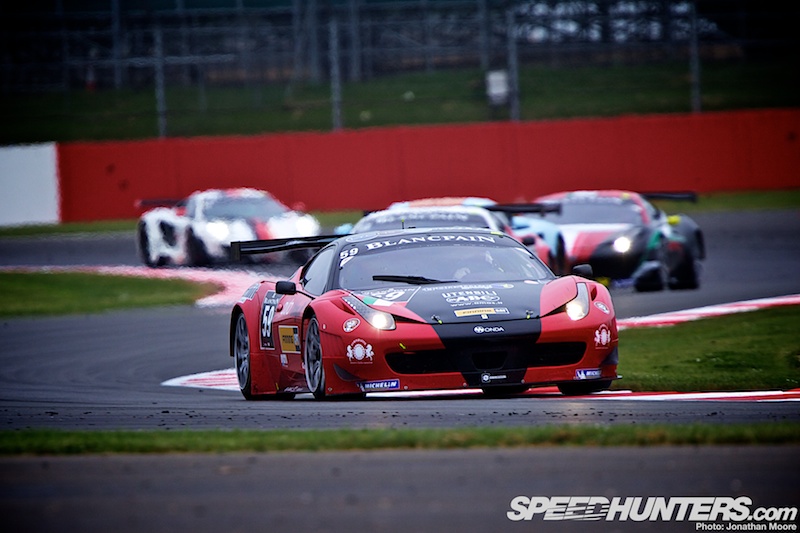
Here, just one long straight but a whole series of flat-out sweepers that make even stiffly sprung GT cars heel over onto the loaded wheels.
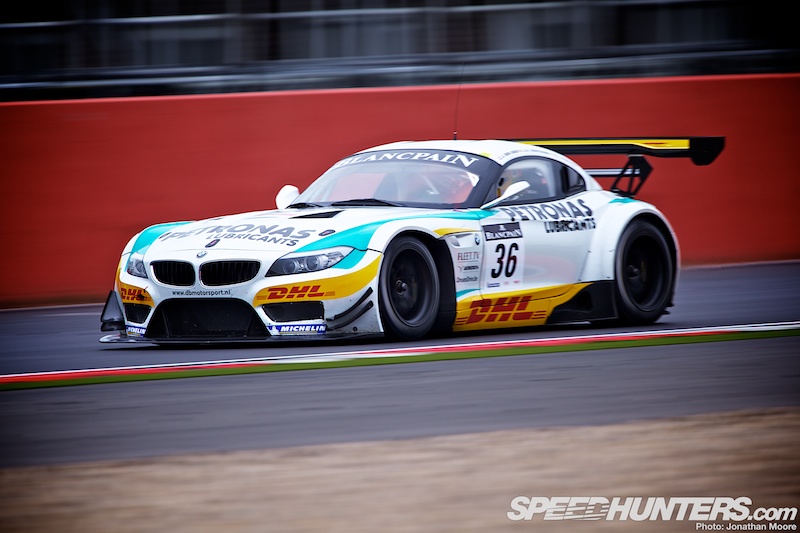
This is a track where you can really see how the different cars are working: the cars roll into the corners as the drivers try and carry as much speed through them as possible so they can then tow up to the car in front and nail them into the next braking zone. The difference between the cars is stark: for instance, the stiffly-sprung BMWs barely seem to register roll even through fast curves.
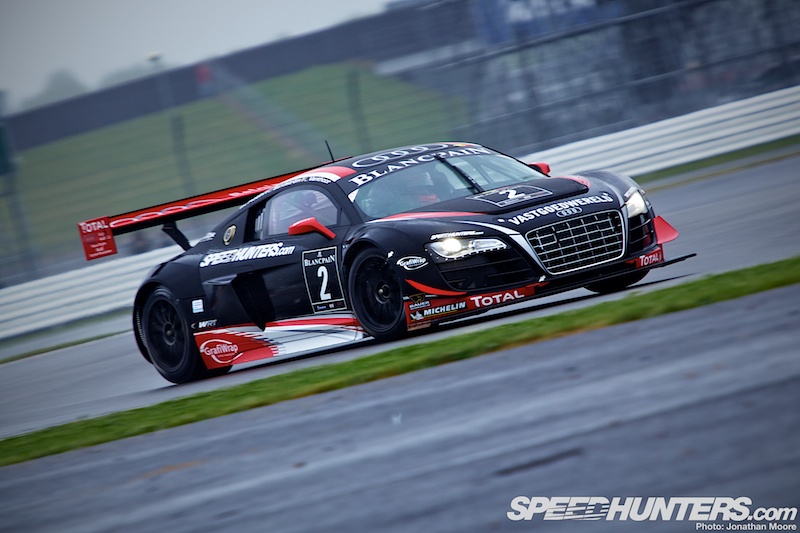
Next up were the Audis: on the straights it looks like there’s plenty of air underneath them, but into braking zones they hunker down and show just a little roll as they hit the apex.
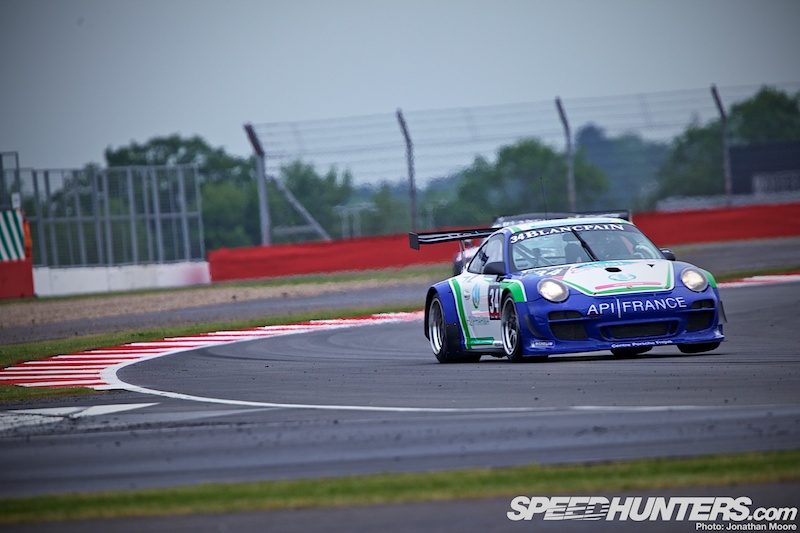
The Mercedes, Ferraris, Porsches and the Nissan looked about the same in general: a lot more noticeable roll, with the back-heavy 911s even cocking a wheel under acceleration on the exit of the slower stuff.
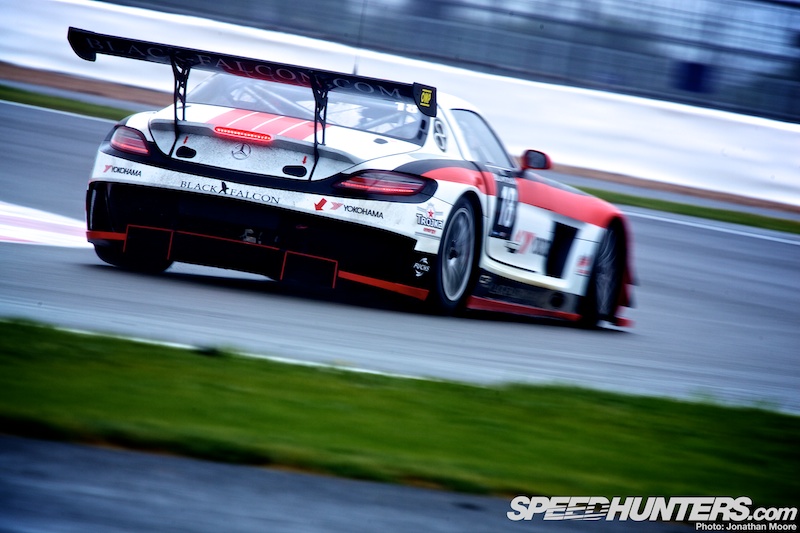
What the Mercs do have is enormous pitch under braking: with the engine in the long nose all the weight is shovelled up front under braking, which makes the big SLS look a real handful in turns.

The Porsches and Nissans are interesting from the fact that their side-skirts of the car are so low compared to the other cars. The front and rear corners of the Porsches virtually drag the ground through corners…
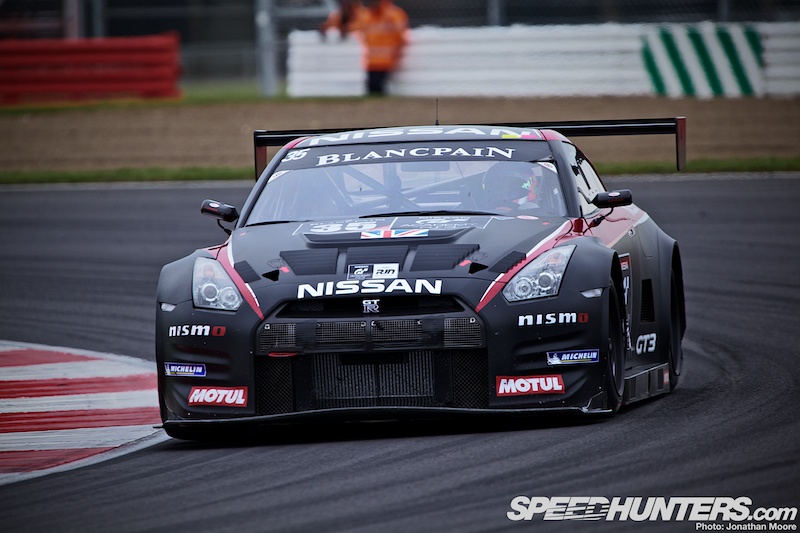
…and the GT-R’s long side-mounted skirts/exhausts make it look like it’s slammed to the tarmac when cornering.
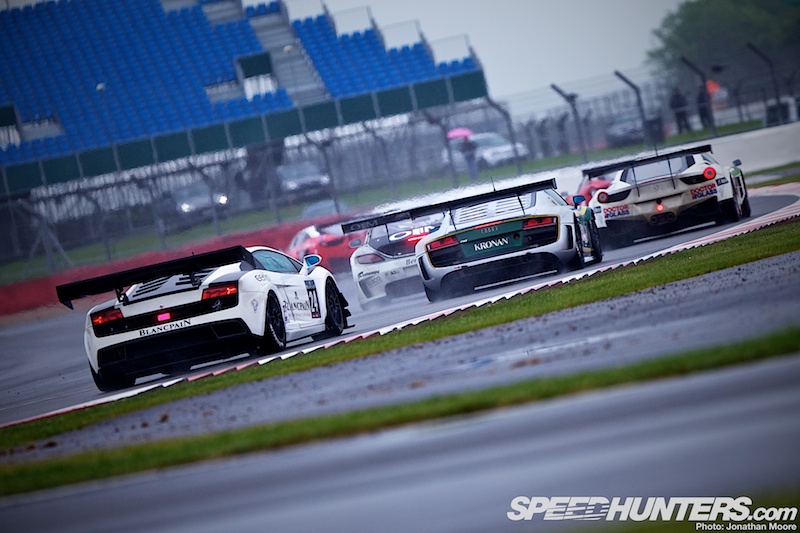
Overtaking is an even more important factor than normal in Blancpain races as there are so many cars out on track. As with any endurance race, it’s all about traffic management.
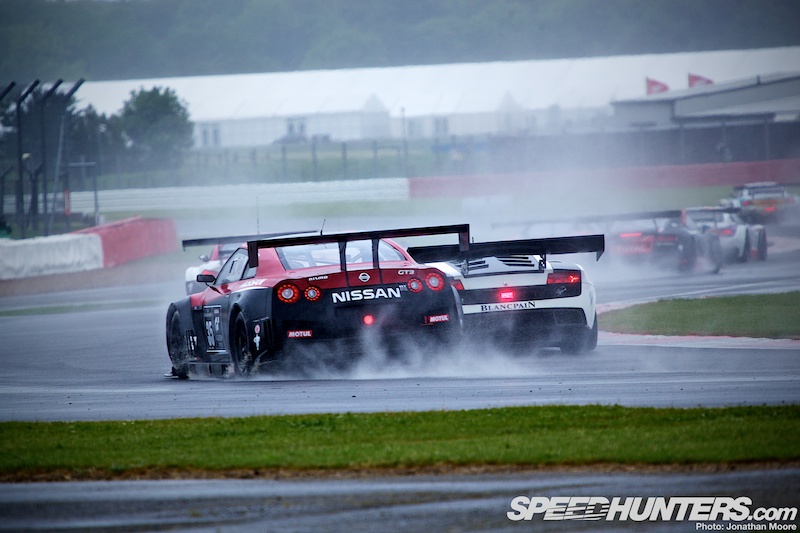
Lose a second behind a slower car and that’s your lead up in smoke. Or, given the weather this weekend, down the drain.
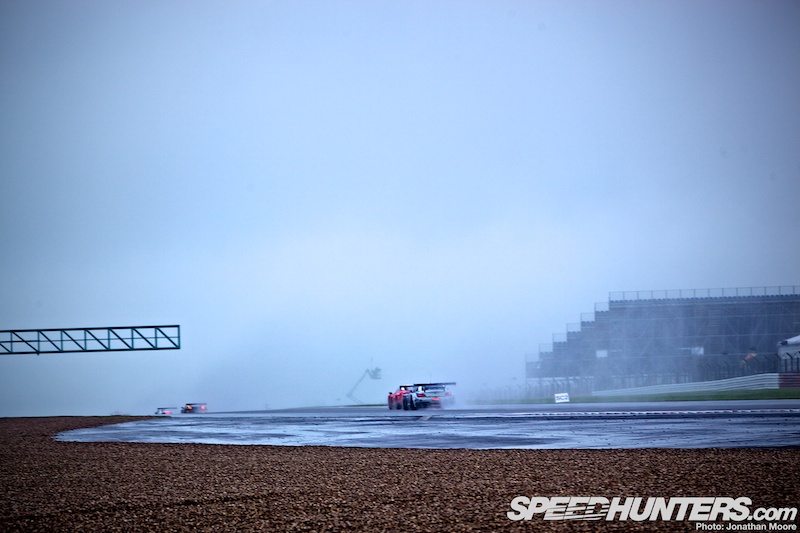
Silverstone gets a bad rap as an open expanse of a track, sanitised for F1 with enormous run-offs where you’re always miles away from the action both as a photographer and spectator.
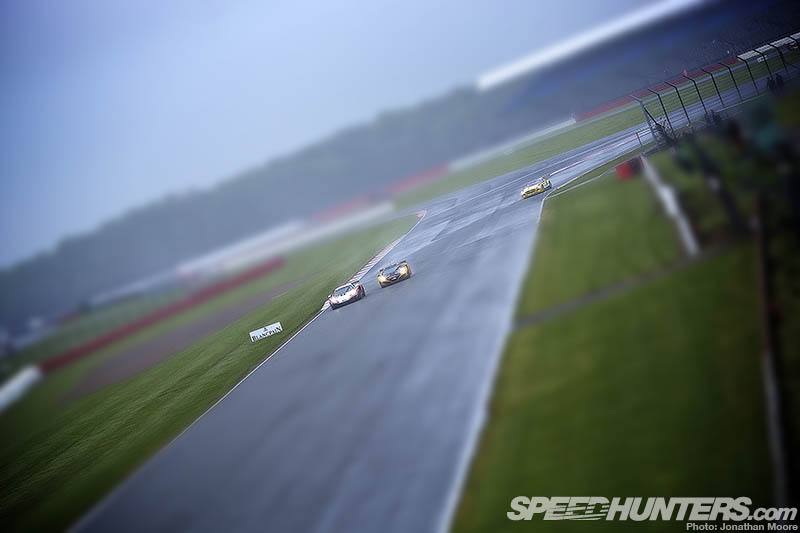
For sure, there are areas where I could stay at home and be closer to the cars, but facetiousness aside Silverstone’s appeal still lies in the raw speed that racing cars demonstrate here. And contrary to the misconception, there are plenty of opportunities to see racing cars at their most flattering, flat-out and up close.
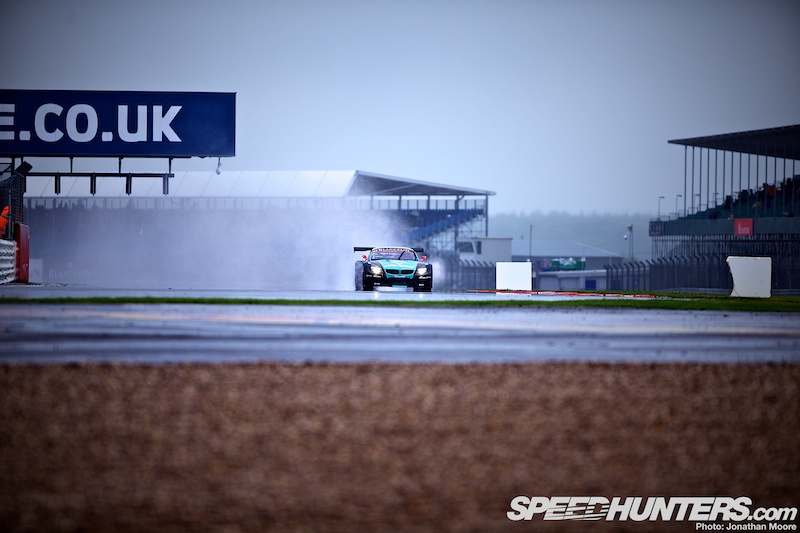
The opening corner, Copse, is a clear example of belief over what your eyes are telling you should be possible in the dry, let alone in the wet. Approach flat-out, dab the brakes and downshift, then throw the car into the apex. As a fan in the Copse grandstands, the cars come straight at you and then just go right.
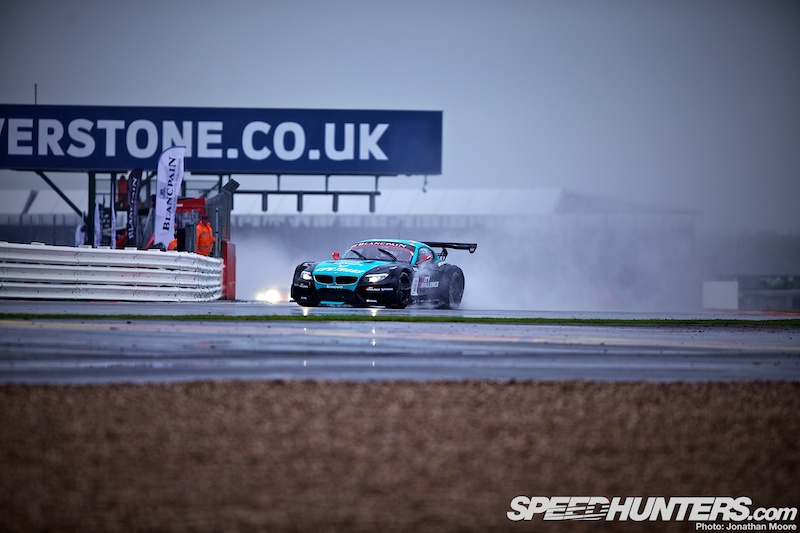
It’s heart-stopping stuff. They don’t progressively turn, or steer gently. One second there’s a GT car coming flat-out directly at you and the next it’s going perpendicular, with seemingly little transition.
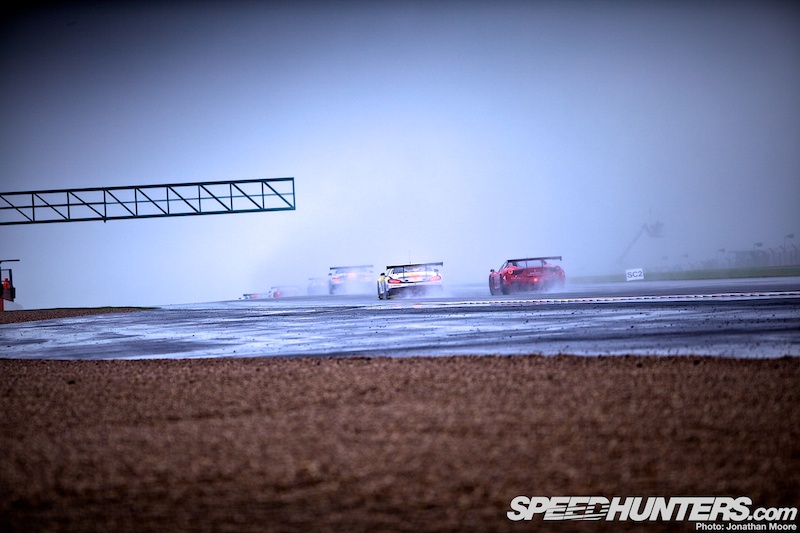
With luck, the car is through and disappearing towards the crest of the short straight that follows. In Sunday’s race, disappearing was literal, both from the rise of the track and the zero visibility…
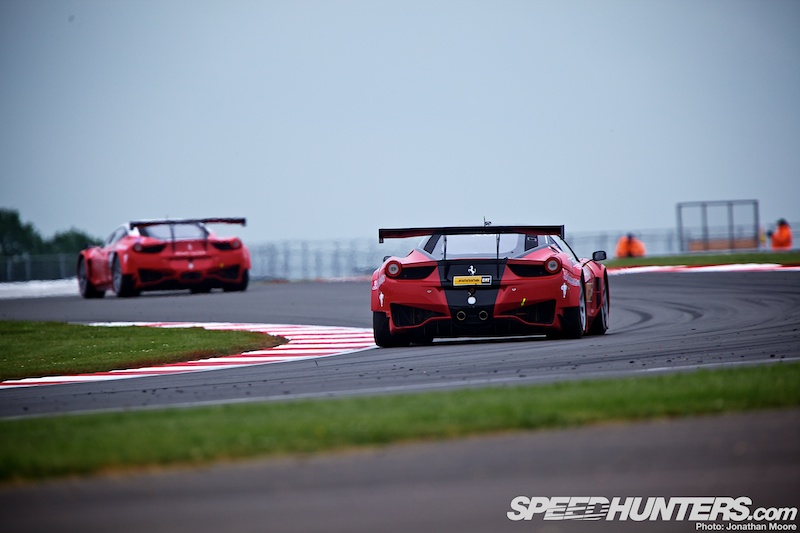
This is the other fallacy about Silverstone: that’s there’s no gradient. Admitted, it’s no Algarve or Brands Hatch, but the rises and falls of the circuit in the opening curves of this configuration of the track are quite pronounced.
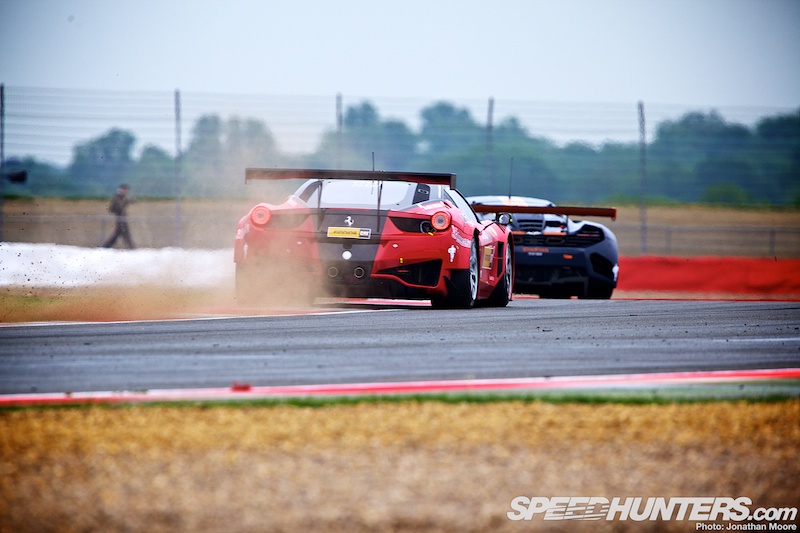
This is a sequence of corners which even has the respect of Formula 1 drivers in single-seaters dripping downforce, cars that have stripped away some of the awe of even the mighty Eau Rouge. Maggotts and Becketts are in no way fearsome corners in the way that Eau Rouge is/was, but they are a true test of the efficiency of a car and the coordination of a driver. The opening shallow left needs to be taken as fast as possible; the entire sequence works against the car, trying to sap speed with every turn.
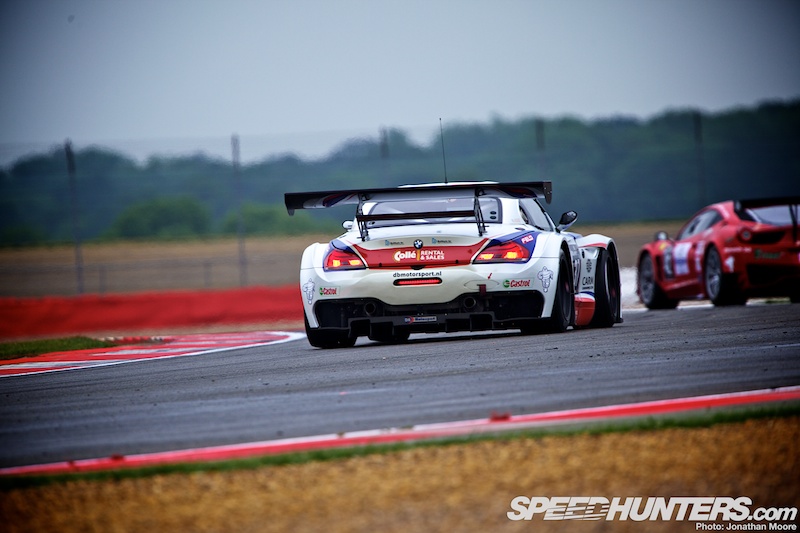
It’s all about entry and commitment. If you’re braking past the apex, it’s all too late.

If you haven’t even got near the apex, well, the next three corners are compromised and you’ll be a sitting duck down the Hangar Straight.
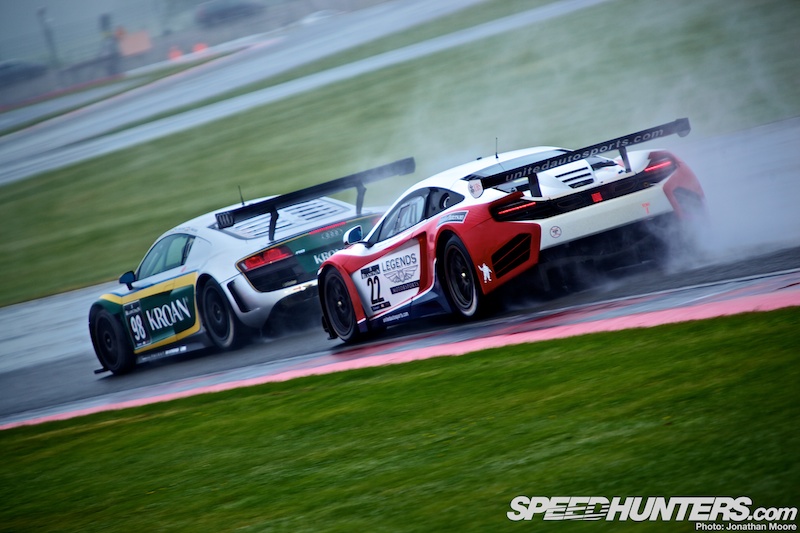
There aren’t that many places where you can get up close to the cars at a modern Grand Prix track: photographers have to pack their very biggest glass for most of the corners… But there are a couple of places at Silverstone where the cars are right in your face – and Maggotts from the inside is one of them.
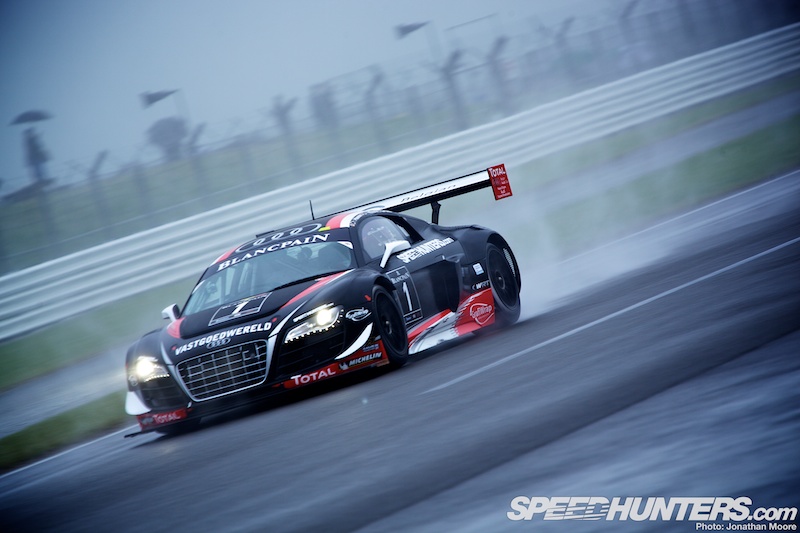
It’s one of my favourite places to watch racing at the circuit; not necessarily to take photos, but just to experience the raw pleasure of a GT car going flat-out on the edge of adhesion just metres from you.

The following right is sharper, crucial, harder. Cars fight through it to push as deeply as possible into the next left.
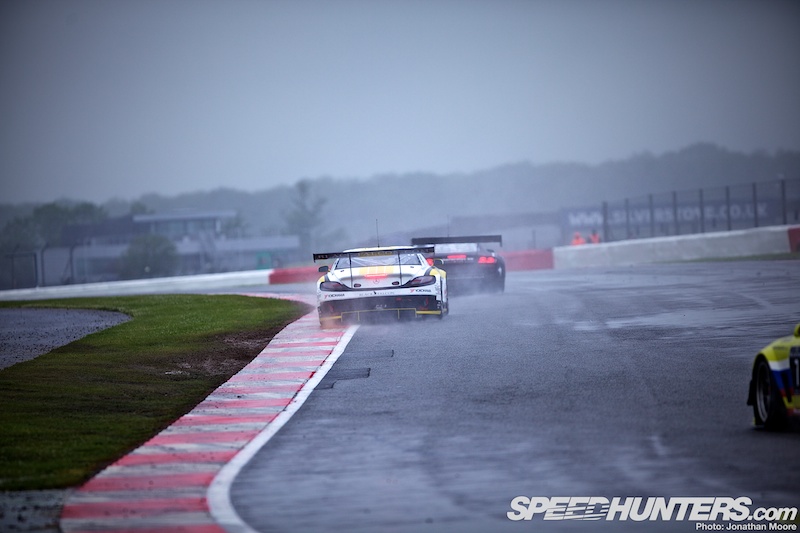
This is the slowest and highest point; cars are forced to use an impossibly shallow angle of entry due to the speed of the preceding corner.

From here the cars zig-zag through and down the descent into the heart of Becketts. Watching them from the lowest level on the approach to Chapel, the final corner of the sequence, dizzying lines of cars are coming towards you, going right and going left all at the same time.
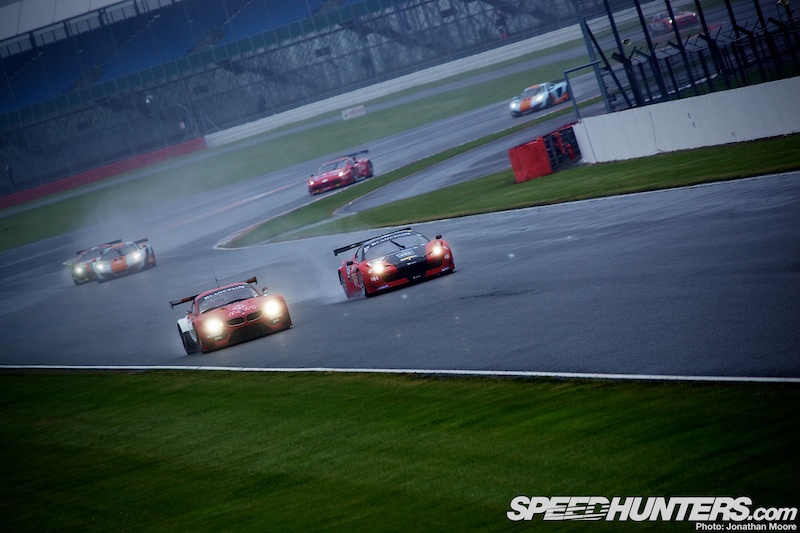
The flat-out Hangar straight is the place to slingshot past slower cars and line up rivals for out-braking into Stowe.
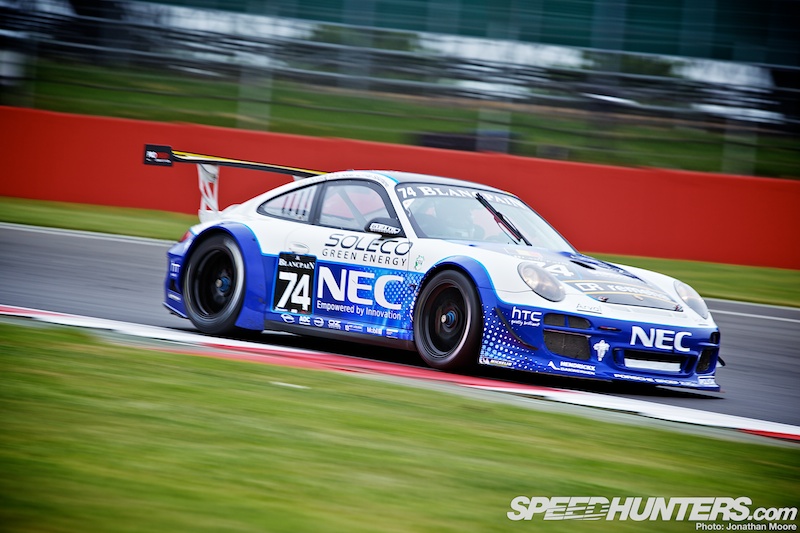
The new Wing pit complex stood idle this weekend, with the quantity of cars in Blancpain making the original pits the better option; Vale and Club are no longer the corners they used to be, so the next challenge is the revised Abbey kink which leads into the new Arena section. Abbey is the other place where the cars really are in touching distance. The new track layout and pit-exit has created a little armco fortress to stand in with the apex to the corner just the other side. Like Maggotts, the cars are breathtakingly quick and shift past with neck-snapping speed.

It’s also an easy place to identify which cars are working well, or who the quick drivers are. You can see why engineers study video and, in particular, images of rivals cars, as you can glean a lot of information about a car from its pitch and roll through a fast corner. The BMWs and Audis were mighty through here, with the SLS also looking quick.
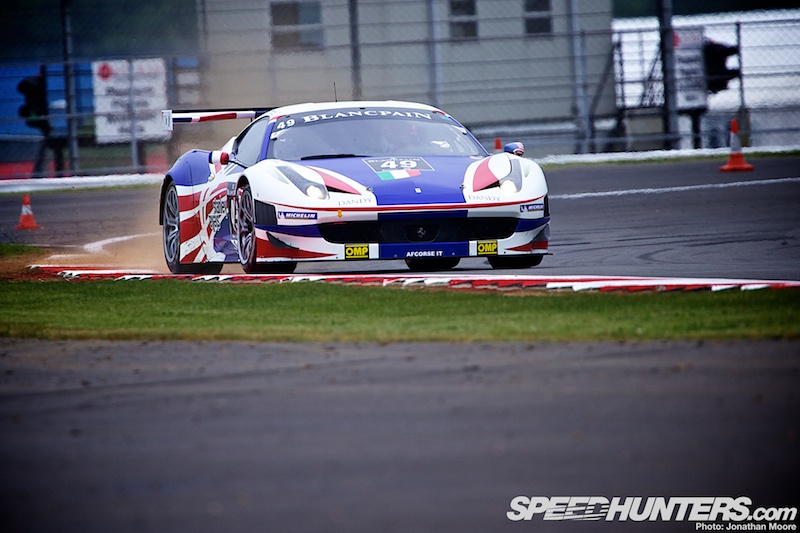
The Arena itself is all about traction: the best place to watch here is at the exit of slow Loop semi-hairpin and then the opening Aintree Corner that leads onto the Wellington straight, as you can watch the cars struggle to put down the power.
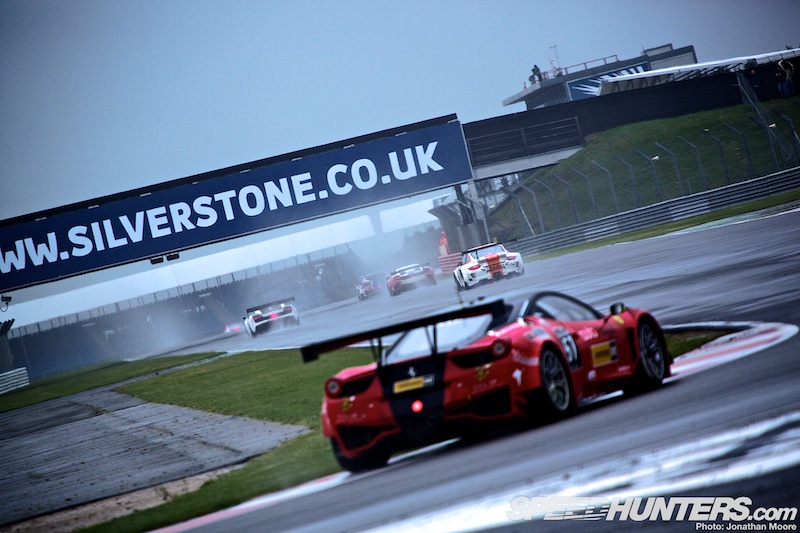
The straight at least provides a clear reminder of where you are…
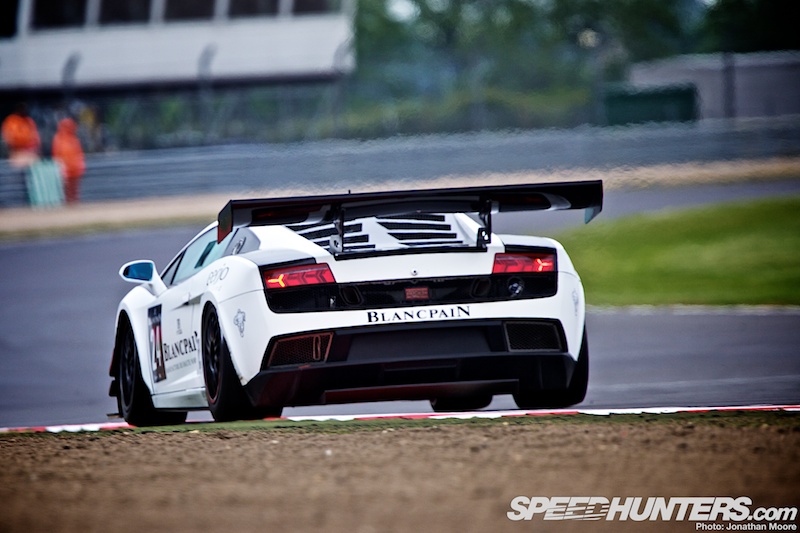
Conditions on Saturday meant you could also clearly see the heat generated by the cars, and the Arena was also a great place to pick that up. The cooler ambient temperature and moisture in the air provided a snap-shot of how a car was working, starting with the position of the engine and exhaust exit.

The BMWs throws up a hellish quantity of heat from their front-mounted engines and rear exhausts: the cockpit gets incredibly hot for the drivers, as we’ve seen in previous races when drivers have almost fallen out of them at the end of races held under in hot conditions.
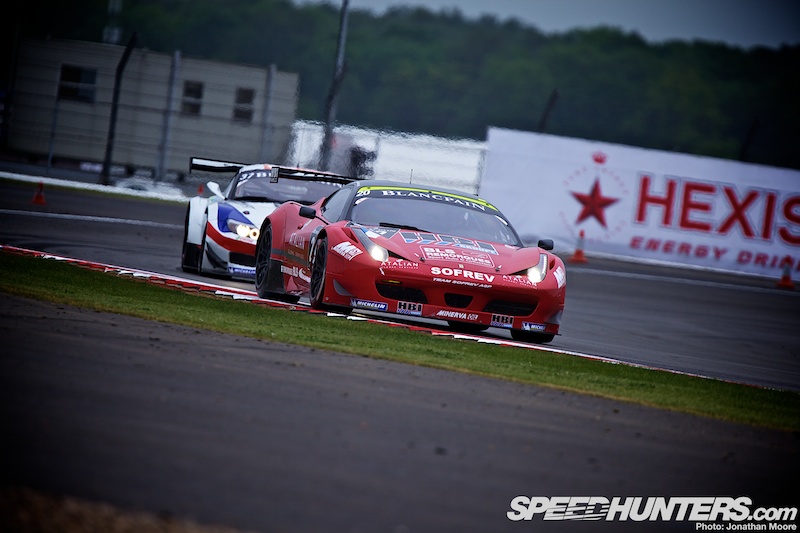
The heat haze also showed you a virtual aero profile of the car itself; the sort of wake you’d normally only see in a wind tunnel. You can see the way that the aerodynamics of a car feed hot air to the rear wing: GT3 cars aren’t exactly laden with downforce in the way that a GTE or LMP car is, but they are about big, simple engines and big, simple wings.
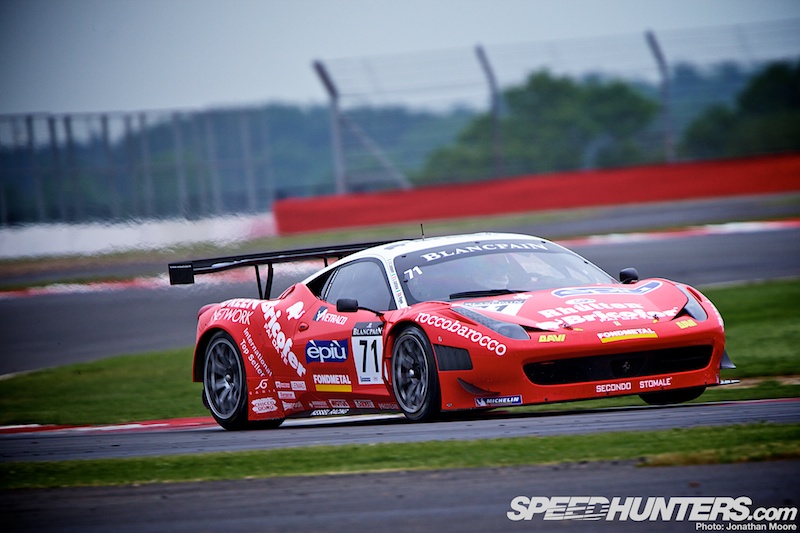
Ferraris have a more horizontal heat signature, with their low-line exhausts and cooling ducts. The Audis push out a lot more heat angled up from the rear deck, helped by the louvres cut into the perspex screen above the mid-mounted V10.
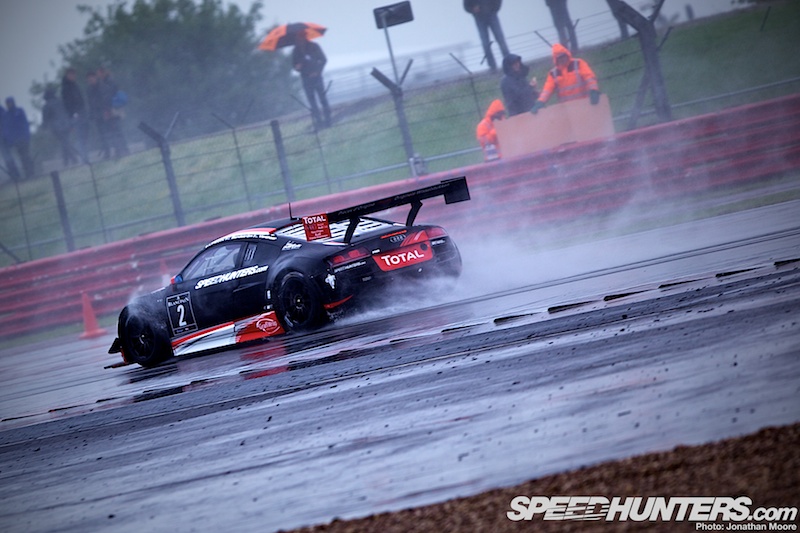
Come Sunday it was a different matter however. The only things being thrown up were gallons of water from the spray left in each car’s wake.
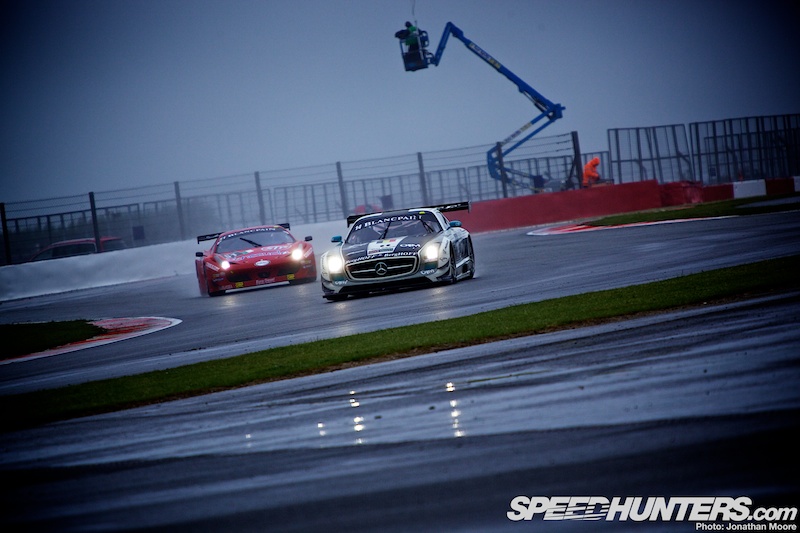
If the spectators were getting cold and wet, pity the poor TV guys stuck up in cherry pickers for four hours…

Driving on your own around Silverstone’s fast curves in these conditions is difficult: following other cars through traffic whilst virtually blind needs nerves of steel.
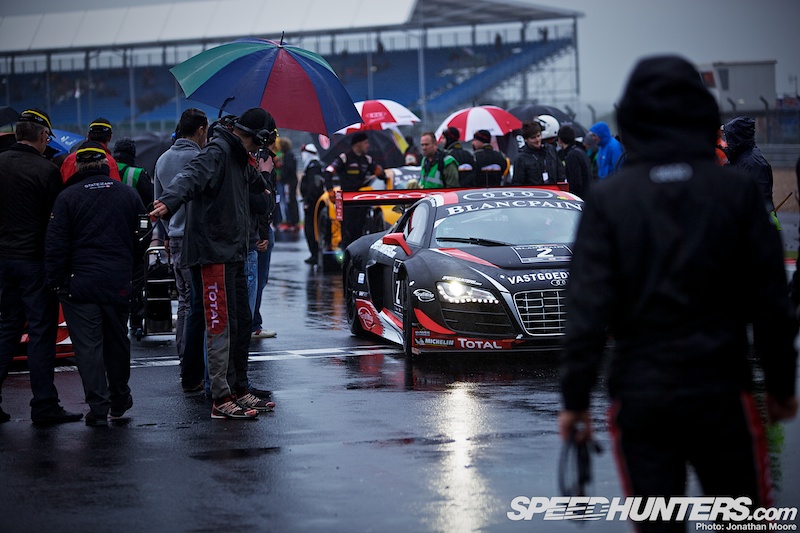
The race itself started with the rain falling and ended with overcast skies threatening another downpour, with degrees of damp in-between.

A number of cars missed the race due to mechanical issues, including the Emil Frey XK. This further the delays the return of the Big Cat to GT racing after the abortive Rocketsports-developed XK programme in the American Le Mans Series and the British Apex-run squad in FIA GT3 some years back.
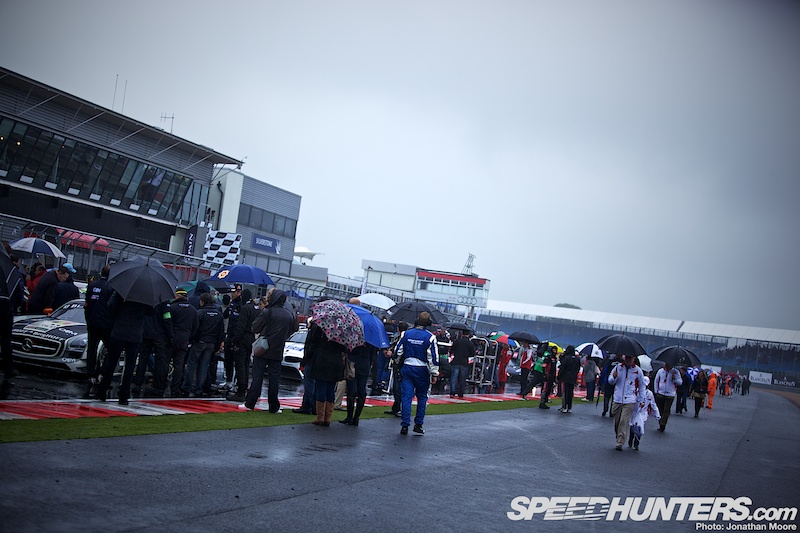
But even then, 50 cars were out on the packed grid for the early afternoon start. The race had been started later in the day to allow a number of drivers competing in the Le Mans test day to fly back in from France.
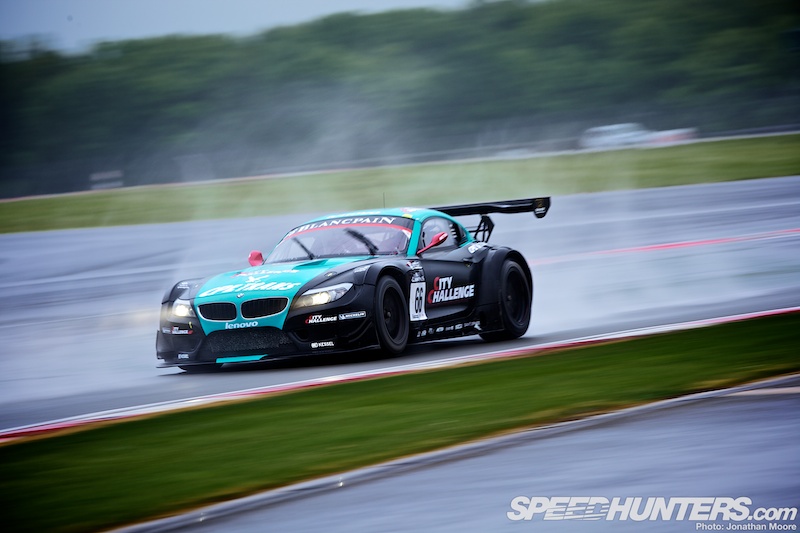
Following a brief safety car-controlled start given the treacherous conditions, the pole-sitting BMW Z4 had seemingly cleared off up the road during the opening segment of the race, quickly building up a decent lead over the chasing pack which comprised a full-house of BMWs, McLarens, Audis, Ferraris and Mercedes.
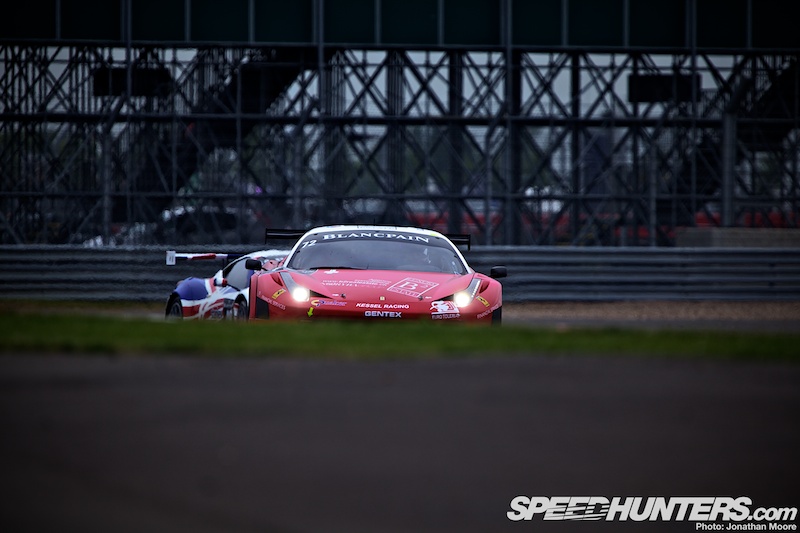
The Ferrari teams were quick to make their way forwards…
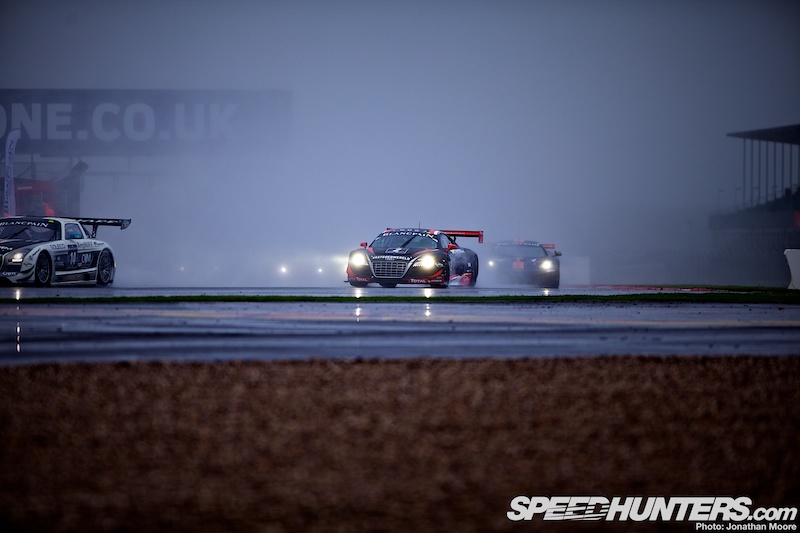
…but the most impressive mover was the #2 WRT Audi R8: Andrea Piccini had started the car 22nd, but was up to ninth by the end of the first hour.
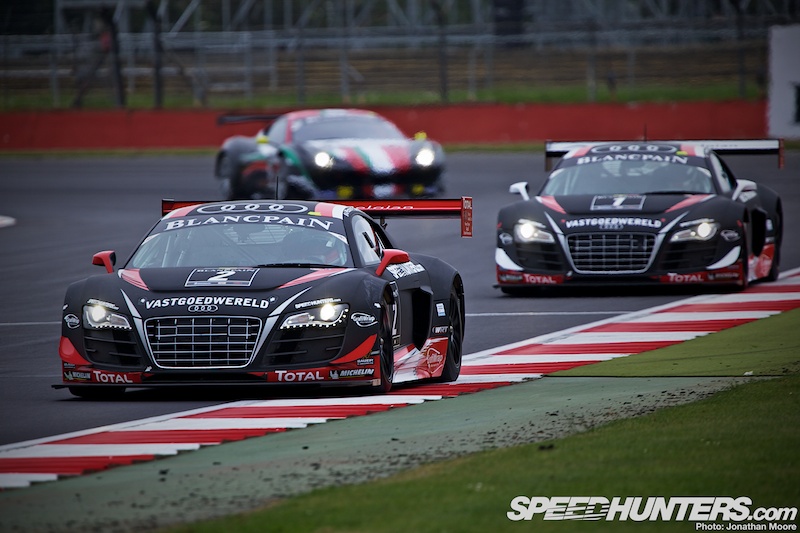
Edward Sandström would bring the Audi home second at the flag, less than a second ahead of their team-mates in the #1 car.
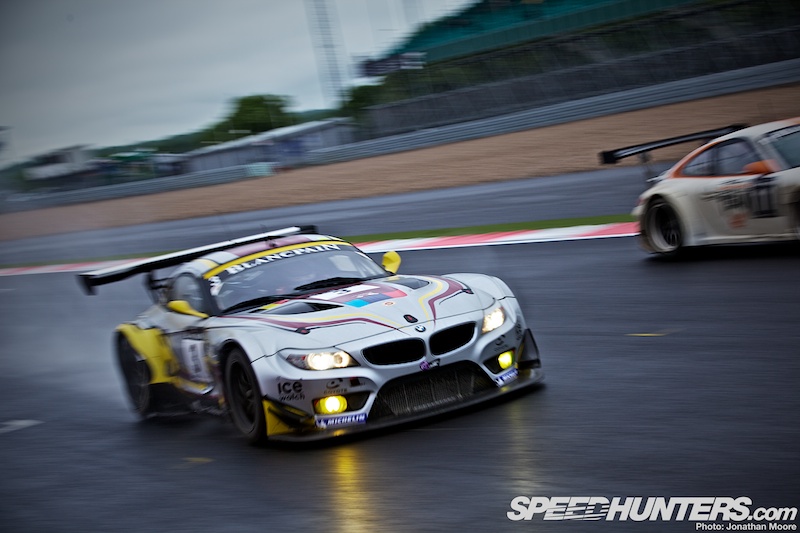
The winners were the crew of the #3 Marc VDS BMW Z4: they’d started in second, had reeled in the leader and then seen a battle with the two WRT Audis in the final hour.
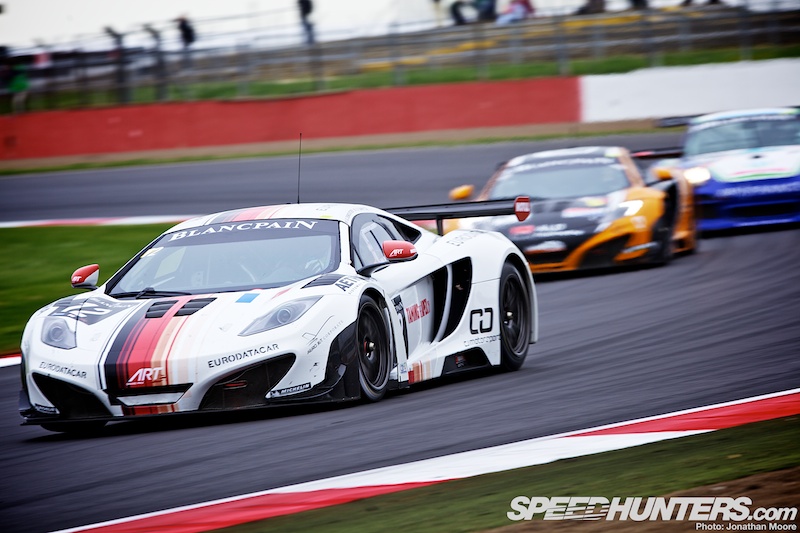
The McLaren challenge faded in the race, thought not for lack of effort: the highest MP4-12C, the ART #12 car, finished 13th.
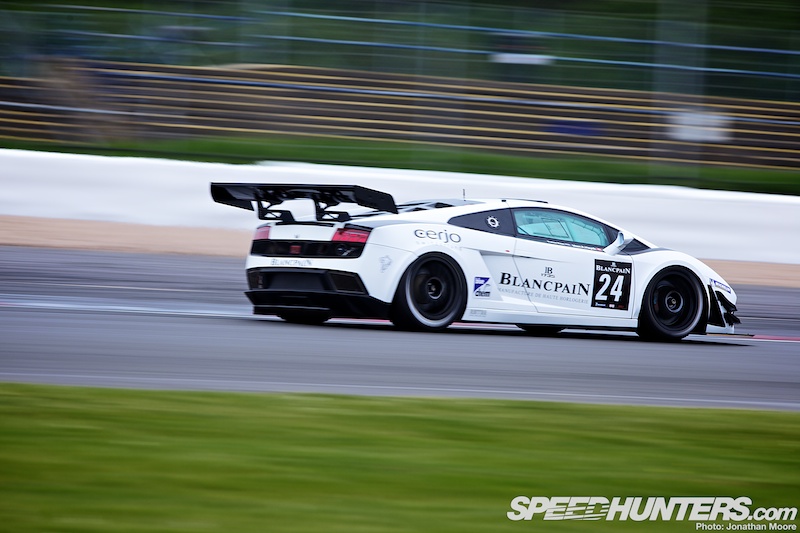
The factory Reiter Lamborghini squad took fourth overall and won the Pro-Am class: the lone Gallardo (a second Lamborghini had been withdrawn after practice) had qualified up front and was battling in the top 10 for most of the race.
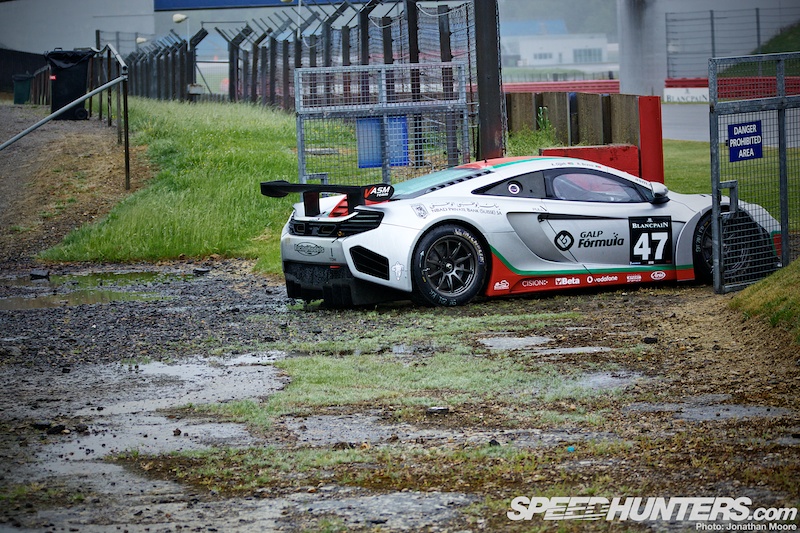
The surprising thing was the relative light number of casualties. The #47 McLaren was stranded out on the Hangar Straight on just the third lap and the #4 Marc VDS BMW Z4 parked up in the Arena, but only in total four cars were sidelined by the flag: impressive, given the conditions.

Of course, there were a number of off-track excursions, which was only to be expected, though more damage was done to drivers’ heart rates than the cars.
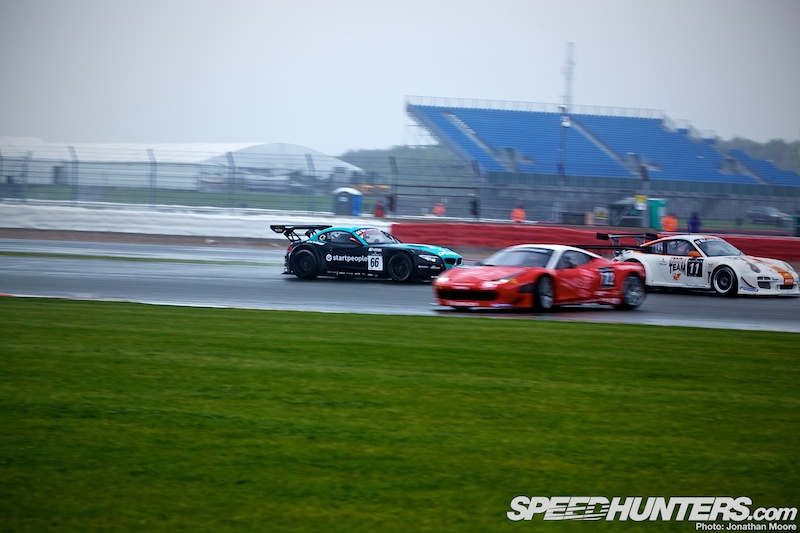
It can’t be fun facing the wrong way when a whole pack of GT3 cars are barrelling into the corner where you’ve just spun…
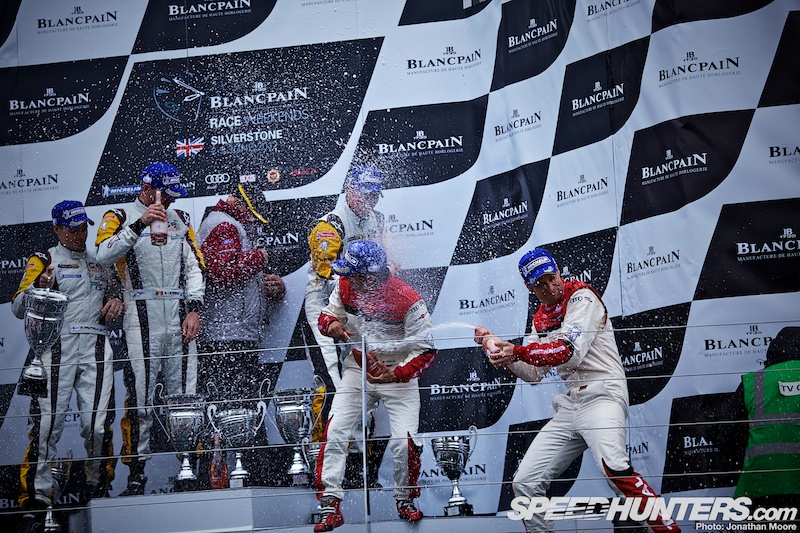
So, it’s two wins in a row for Marc VDS, but now three podiums for the WRT: both teams are going to be hard at it Paul Ricard in France in a month’s time for the third round of six. We’ll be back out in force for the fourth round of the Blancpain Endurance Series: the Spa 24 Hours.

Blancpain Endurance Series Round 2
Silverstone, UK
RACE RESULT
1: #3 PRO Marc VDS BMW Z4 (Palttala/Leinders/Martin) 73 laps
2: #2 PRO WRT Audi R8 LMS (Piccini/Vanthoor/Sandström) +54.792s
3: #1 PRO WRT Audi R8 LMS (Haase/Mies/Ortelli) +55.480s
4: #24 PRO-AM Reiter Lamborghini Gallardo LP600+ (Hayek/Kox) +1:54.637s
5: #36 PRO DB Motorsport BMW Z4 (Lemeret/van Hooydonck/den Boer) +2:06.113s
Jonathan Moore








@Speedhunters, i miss the headings, like Formula drift or something else. please fix that
What lens did you use to shoot the image before the one with the miniature effect?
One of the best reports i ever seen!
Silverstone sucks. I think I even prefer the HTTT.
Silverstone sucks. I think I even prefer the HTTT.